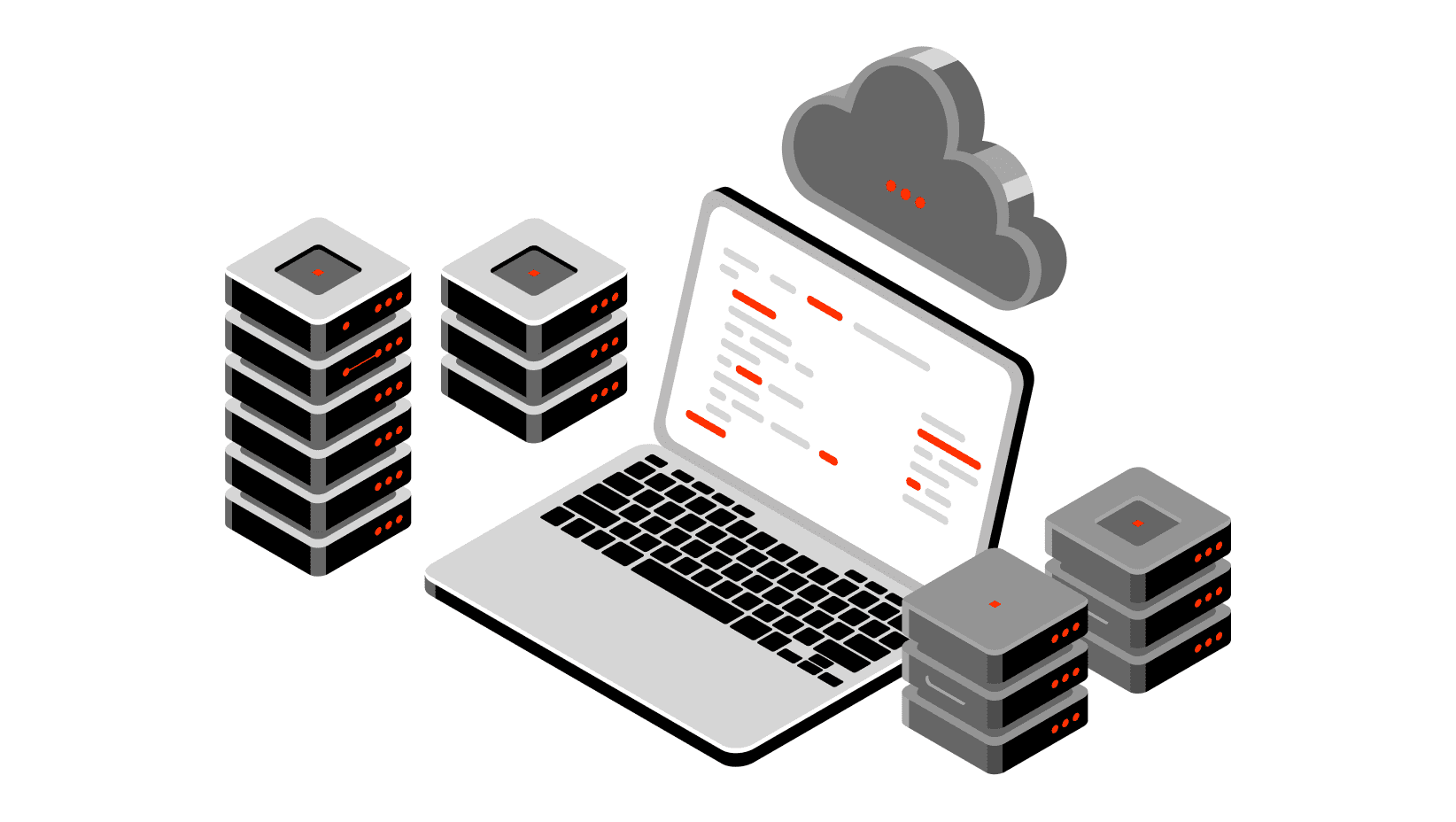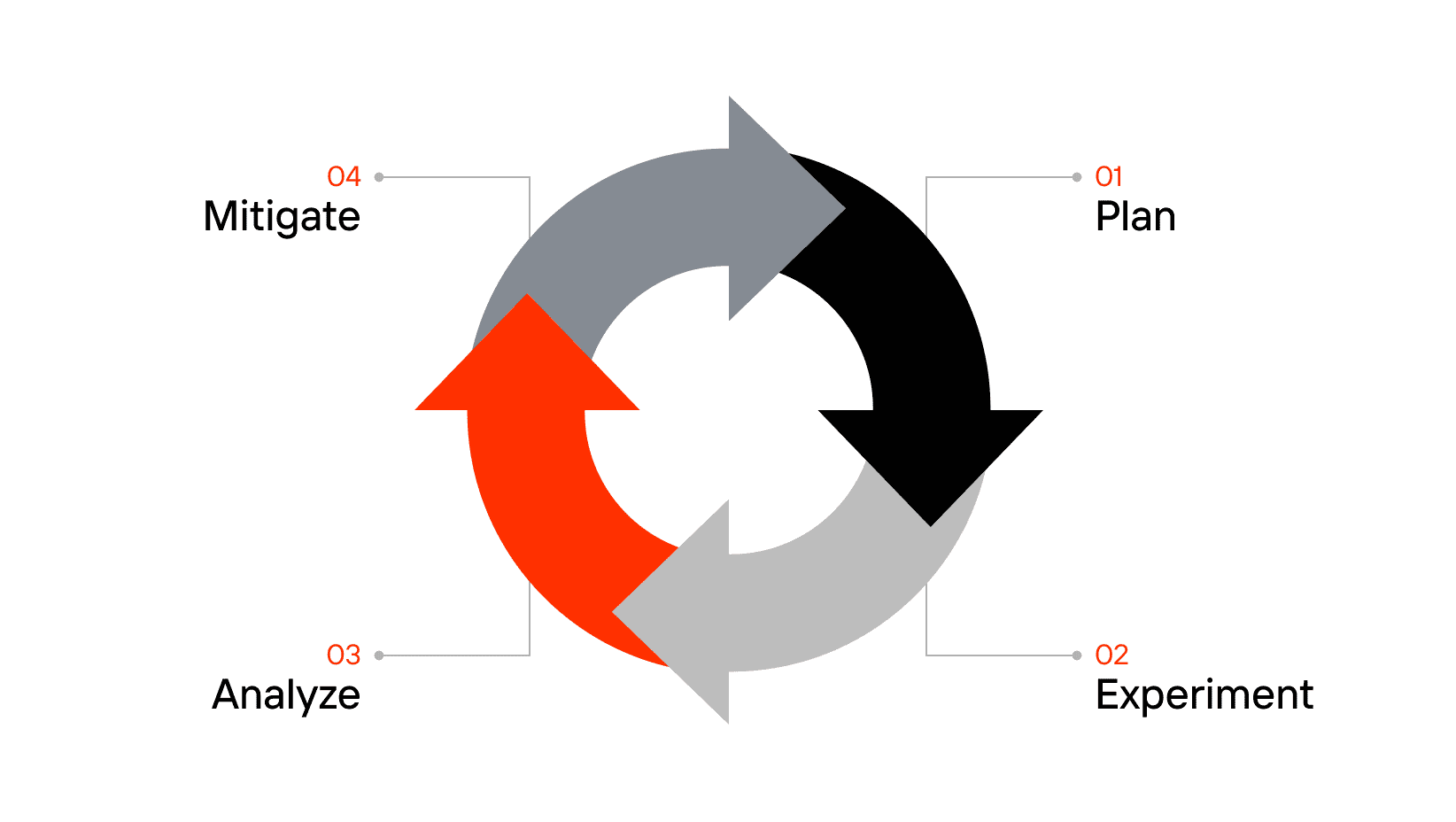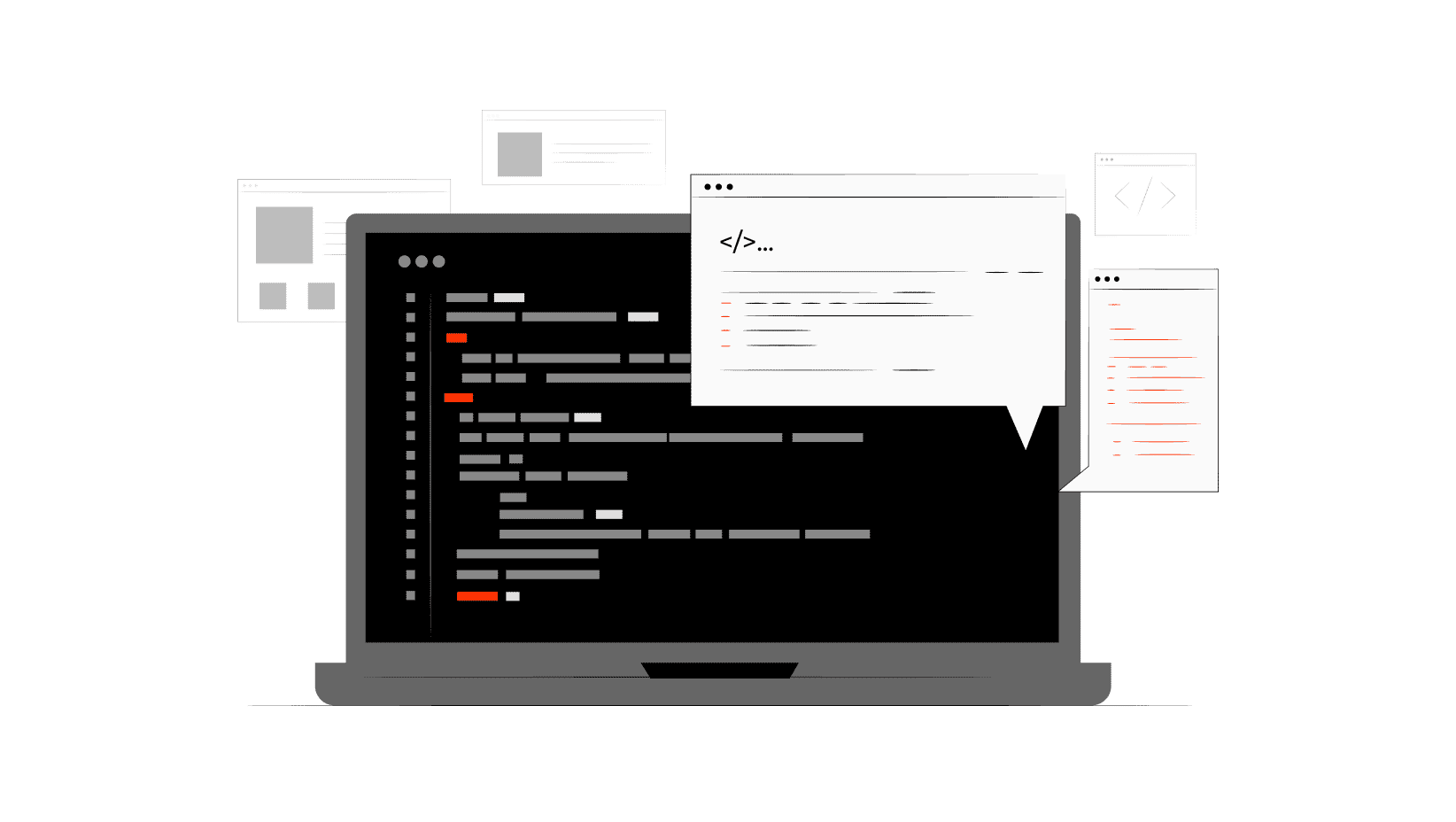Chaos engineering is a way to test how complex systems respond to unexpected problems. The idea is simple: introduce controlled failures and watch how the system behaves. This helps uncover weak points before they lead to costly outages. An approach that forces you to think about the unexpected, making it easier to build robust, fault-tolerant applications.
Done right, chaos engineering can make systems more resilient, reducing the risk of sudden breakdowns and improving overall performance. We also apply chaos engineering in our load testing services.
What is Chaos Engineering?
Chaos engineering is a discipline focused on testing how complex, distributed systems respond to unexpected failures. It involves intentionally introducing chaos engineering principles into production or staging environments to uncover weaknesses before they become costly outages.
The purpose of chaos engineering is to make systems more resilient by revealing how they behave under stress. Instead of waiting for failures to happen naturally, teams use controlled experiments to identify weak points and address them proactively. This approach forces teams to confront the messy, unpredictable nature of real-world traffic and usage, helping them design more robust, fault-tolerant architectures.
For example, you might simulate a server crash, introduce random latency, or cut off a critical service to see how your application responds. The goal is to learn from these controlled failures and build systems that can handle the unexpected.
Principles of Chaos Engineering
The principles of chaos engineering provide a structured approach to uncovering vulnerabilities in complex systems. They guide teams in designing experiments that reveal weak points without causing unnecessary disruptions. Here’s a breakdown:
Benefits of Chaos Engineering
The value of chaos engineering goes beyond just finding bugs. It forces teams to confront the often messy, unpredictable nature of real-world systems. Here’s what that actually means:
Chaos Engineering vs Traditional Testing
While both chaos engineering and traditional testing aim to improve system reliability, their approaches and goals are fundamentally different.
| Aspect | Traditional Testing | Chaos Engineering |
| Testing Scope | Focuses on specific components or isolated functions, like unit tests, integration tests, or UI validation. Typically aims to verify known behaviors. | Examines the entire system, including complex interactions between microservices, databases, and external dependencies. Looks for unexpected behaviors in real-world scenarios. |
| Failure Types | Catches known, repeatable bugs, like null pointer exceptions or incorrect API responses. | Introduces unpredictable failures, like random network latency, database timeouts, or node crashes, to expose weaknesses in system design. |
| Data Environment | Typically relies on controlled test data or synthetic inputs, which may not fully capture production complexity. | Uses live production data or realistic simulations to capture the unpredictable nature of real-world traffic. |
| Impact on Production | Usually run in test environments to avoid disrupting live services. Failures are isolated and controlled. | Often conducted in production or near-production environments, accepting the risk of real customer impact in exchange for realistic insights. |
| Automation and Tooling | Heavily relies on structured test scripts and automated pipelines (e.g., Selenium, JUnit). | Often uses specialized tools like Gremlin, Chaos Monkey, or Litmus, which are designed to inject controlled chaos into live systems. |
| Resilience Focus | Primarily about catching bugs and verifying expected behavior before deployment. | Focuses on building fault tolerance, validating failover mechanisms, and preparing for real-world chaos. |
| Mindset and Goals | Centered on validation and verification. Tests are considered complete when they pass. | Focused on discovery and learning. Failures are seen as valuable insights for improving system resilience. |
Types of Chaos Engineering Experiments
Chaos engineering experiments come in many forms, each targeting a different aspect of system reliability. Here are some of the most common types:
Latency Injection
Latency injection tests how a system handles delayed responses from critical services. This is particularly important in microservice architectures, where even minor delays can ripple through the system and create significant performance issues. For example, adding artificial delays to a key API can reveal bottleneck testing opportunities, where a single slow service impacts the overall user experience.
Fault Injection
Fault injection simulates the failure of individual components to see how the system responds. Killing server processes, dropping database connections, forcing timeout errors — it’s a way to test how well your failover mechanisms work and whether your error-handling logic can prevent a cascading failure.
Load Generation
Load generation involves simulating high traffic volumes to test the system’s scalability and capacity limits. It is similar to benchmark testing, where the goal is to find the system’s breaking point under extreme load. It’s a critical step for understanding how your architecture handles peak traffic.
Canary Testing
Canary testing involves gradually rolling out changes to a small subset of users before a full-scale release. Teams can catch issues early and roll back quickly if something goes wrong. It’s a less aggressive form of chaos engineering, but still valuable for identifying issues that only appear under real-world conditions.
Resource Starvation
Resource starvation tests push the limits of system resources, such as CPU, memory, or disk I/O. This can reveal how your application behaves when it’s competing for limited resources, potentially exposing deadlocks, memory leaks, or unoptimized code paths.
Network Partitioning
Network partitioning tests simulate network failures, like dropped packets or split-brain scenarios in distributed databases. Usually used with systems that rely on high availability and data consistency, as it reveals how well they handle communication breakdowns.
Best Practices for Chaos Engineering
Effective chaos practices and experiments go beyond basic break tests and require a deep understanding of your systems. Here’s a structured approach:
Understand Your System’s Normal State
Chaos experiments are only meaningful if you know what stability looks like. Establish clear performance baselines, including response times, error rates, and throughput. Without context, interpreting experiment results won’t lead you anywhere..
Set Clear Objectives for Each Experiment
Every chaos test should have a specific focus, and the goals need to be well-defined. Avoid unnecessary disruptions and ensure that experiments generate relevant insights.
Treat Failures as Learning Opportunities
Each failure is a valuable insight. And each unexpected behavior reveals a gap in system design or operational processes. Document the findings and adjust your architecture accordingly to prevent similar issues in the future.
Use Realistic Scenarios
Focus on real-world conditions. Instead of just pulling the plug on a server, simulate the subtle issues that are harder to catch, like intermittent network delays or slow database responses. This is the key chaos engineering approach that uncovers weaknesses that might otherwise go unnoticed.
Automate Chaos Experiments
Scaling chaos engineering requires automation. Manual testing can provide insights early on, but automated chaos experiments are more consistent and less prone to human error. Specialized chaos engineering tools can help standardize this process.
Make Continuous Improvement a Habit
Chaos engineering isn’t a one-time effort. The insights you gain should feed back into your development and operations processes. Regularly revisit past experiments, expand the scope of your tests, and set increasingly higher resilience goals.
Final Thoughts
Chaos engineering is a powerful way to find and fix the weak points in complex systems, but it’s just one piece of the puzzle. It’s great for uncovering hidden risks, but it doesn’t replace the basics — like proper unit testing, integration testing, and load testing.
If you’re serious about building reliable software, chaos engineering is a good start, but there’s a lot more to the story. The real work begins when you combine it with everything else you’re doing to keep your systems stable.
Related insights in blog articles
UI Load Testing: Full Guide

When an application starts to slow down, users notice it immediately. Pages hesitate to load, buttons lag, animations freeze for a split second, and that’s often enough to make someone close the tab. These issues rarely come from the backend alone. In most cases, the real strain appears in the browser, where scripts, styles, and […]
Internet of Things Testing: Benefits, Best Practices, & Tools for Reliable Connected Systems

IoT is an ecosystem of devices connected through networks and relying on cloud or app services for endless communication, data exchange, and smart automation. For this ecosystem to work seamlessly 24/7, it heavily depends on IoT testing. Apart from impeccable performance, the latter guarantees the reliability, protection, and integrity of diverse devices, networks, apps, and […]
Swagger API Testing: What It Is, How It Works, and Best Practices for QA Teams

Testing APIs without proper documentation can feel like walking through fog — every endpoint is a guess, every parameter a risk. But not with Swagger UI API testing. Swagger turns static API definitions into a live, interactive interface where developers and QA teams can validate endpoints, check request/response schemas, and explore the system in real […]
BlazeMeter vs. JMeter: Full Comparison

Ever wondered whether you should stick with Apache JMeter or move your tests to BlazeMeter? Both tools are powerhouses in performance and load testing, but they serve different needs. JMeter is an open-source desktop tool under the Apache 2.0 license; ideal for local or distributed testing across HTTP, APIs, JDBC, and more. BlazeMeter, on the […]
Be the first one to know
We’ll send you a monthly e-mail with all the useful insights that we will have found and analyzed
People love to read
Explore the most popular articles we’ve written so far
- Top 10 Load Testing Tools for 2025: The Deep Dive Sep 9, 2025
- Cloud-based Testing: Key Benefits, Features & Types Dec 5, 2024
- Benefits of Performance Testing for Businesses Sep 4, 2024
- Android vs iOS App Performance Testing: What’s the Difference? Dec 9, 2022
- How to Save Money on Performance Testing? Dec 5, 2022





